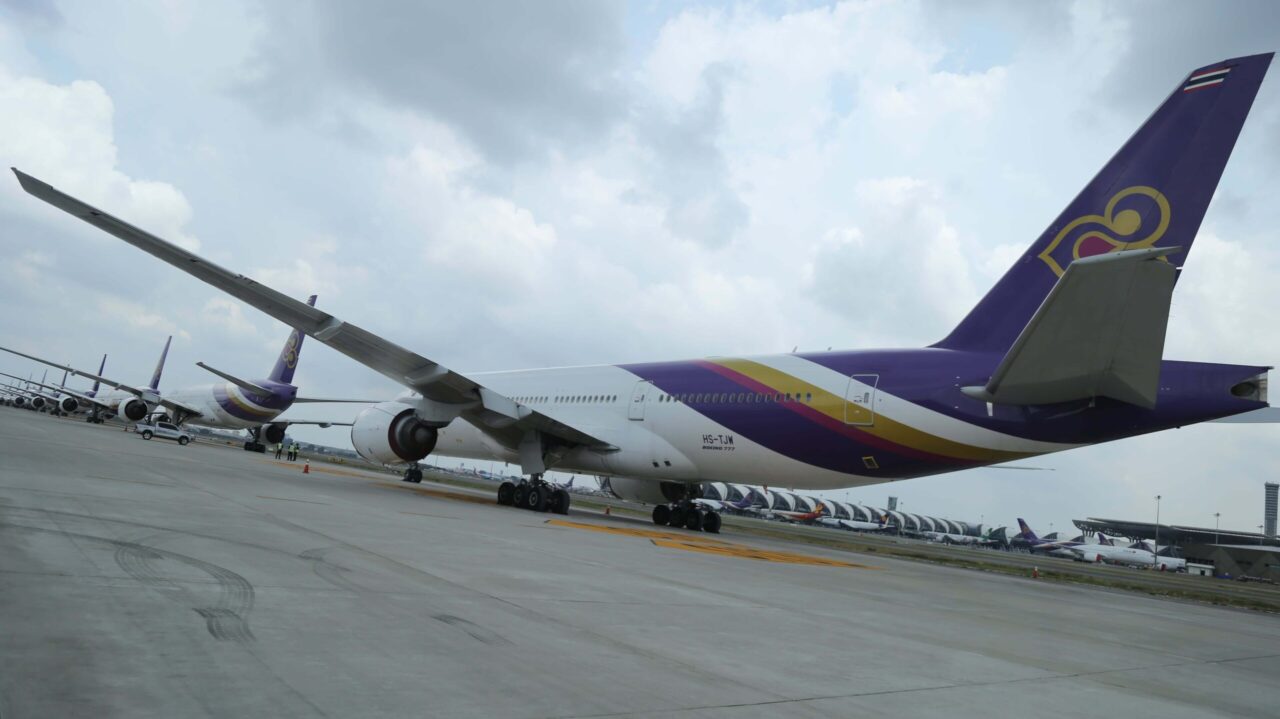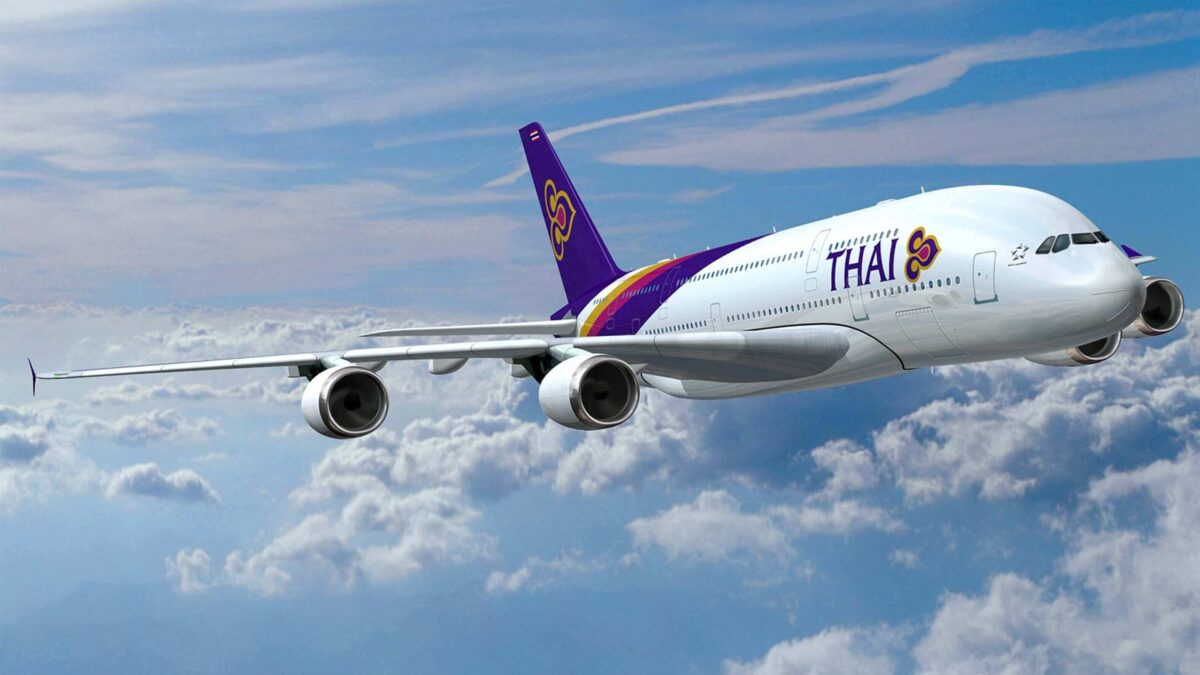Note: Thai language version of article is lower down หมายเหตุ: บทความภาษาไทยอยู่ด้านล่าง
It has been over three months since Thai Airways International secured court approval for its rehabilitation plan, with many industry observers questioning whether the carrier can execute on the plan and be competitive again.
The Thailand Central Bankruptcy Court’s June 15 blessing has cleared the last hindrance to implementing the ambitious turnaround plan of the beleaguered flag carrier that is saddled with 410 billion baht (US$12.8 billion) of debts.
Now the rehabilitation plan, which earlier won creditors’ approval prior to the court’s approval, has begun to gain momentum.
Certain progress has been made in executing the plan such as in debt restructuring, sales of assets and investments, staff redundancies, reducing expenses and raising revenues; conducted through more than 600 action plans.
The struggling 61-year-old carrier gained 25.89 billion baht through asset sales including big ticket asset sales such as its 1.8 billion baht Bangkok training centre which sits on prime land and the 2.7 billion baht sale of its stake in Bangkok Aviation Fuel Services during this year’s first-half.
These are initial steps taken in its long and arduous journey to recovery which is fraught with huge challenges.
Clearly, the pathway to revival, hopefully over next three to five years, is not going to be as ‘smooth as silk’ as Thai’s corporate slogan goes, critics say.
The carrier’s internal inefficiencies, persistent failures to keep up with rival airlines in the increasing hostile operating environment, political and government meddling as well as leadership issues – all of which have existed in Thai for a long time are major obstacles to the successful execution of the plan.
The uncertainties in global air travel, triggered by the pandemic, remain a significant threat to the airline’s resurrection.

Thai’s 747-400: Jumbo size conundrums plagued the airline (Photo: THAI)
Criticisms
Thailand Development Research Institute (TDRI), the country’s leading think-tank, is one of the organisations that remains sceptical about the prospects of Thai getting back on its feet financially.
In a research paper issued weeks before the bankruptcy court decision, TDRI says ample statistics show that Thai may be inefficient in its operations to the point that its business should not be revitalised at all.
Thai’s operating results in the period 2017-2019, prior to COVID-19, had been in the red all during that period, it says.
The airline’s losses jumped from two billion baht in 2017 to 11 billion in 2018 and reaching 12 billion in 2019, reflecting a business that has been underperforming for a long time.
The pandemic only served to quicken the pace of sounding of the death knell, says the institute.
The impact of the pandemic on the market devastated Thai further in 2020 with a net loss of 141 billion baht with its passenger numbers plunging 76% and cargo volumes down 72%.
Thai has only posted annual profits twice in the past decade. The government has tried to reform it many times, with little success before the carrier applied for bankruptcy protection in May 2020.
TDRI, along with many analysts and veteran Thai executives, are in consensus that the Thai government should stem its role in directly interfering with the rehabilitation and leave the matter entirely in private hands.
The government reduced its stake in the airline to 47.9% and industry sources say it should refrain from putting many of its people on the airline’s board, something the government did in the past.
They say if there are too many political appointees in the board, the rehabilitation plan may follow a political agenda, something that proved to be detrimental to Thai’s businesses in the past.
The success of the rehabilitation plan must rely largely on the efficiency of private business operations, no more government manipulation, the sources add.
“It’s really an uphill task to make Thai fly high again, given the conundrums that have really plagued it for decades,” a veteran Thai executive, familiar with the matter, told the Smart Aviation Asia Pacific.
“But the chance of Thai regaining the past status quo over the next five years, in my view, is possible only if all the airline’s fundamental troubles are completely put to rest and that there are no more upheaval issues like the COVID-19 pandemic arising in the period,” adds the veteran who has worked for the airline for 25 years.

A good number of THAI’s aircraft have been left idle on the tarmac at Bangkok’s Suvarnabhumi International Airport (Photo: Airports of Thailand)
Goals
Management at Thai now measures the success of the rehabilitation by fulfilling four key objectives:
– Raising registered capital and securing new credits according to the conditions set forth in the rehabilitation plan,
– There must be no incident of default for a period of five years from the date of the court’s approval of the plan,
– Able Be able to make profits before interest, taxes, depreciation and amortisation (EBITDA) from operations after deducting cash to pay liabilities under aircraft lease agreements at the average annual amount of not less than 20 billion baht in the two years prior to reporting the progress of the rehabilitation to the court, while the minimum EBITDA in the latter years must also be not less than 20 billion baht.
– That the airline appoints new directors to its board in case of a change of shareholders
Cost regimes
The course of cost regime that Thai has been told to pursue, with vigour, is a cost reduction each year of 30 billion baht.
Avenues for cost reduction are: renegotiating aircraft leases, downsizing the fleet and reducing the number of aircraft types to five from 12, reducing engine types to four from nine, renegotiating with engine maintenance providers and adjusting pilot compensation packages, among others.
In addition, Thai has been reducing its workforce. It had about 29,000 in 2019, about 15,600 in May 2021 and by end of this year could have as little as 13,000.
Management, meanwhile, has been cut from 800 to 500.
With all these initiatives, Thai expects to slash staff expenses from 2.5 billion baht per month in 2020 to 800 million baht per month by year end.
Fleet
Under the current aircraft rationalisation plan, Thai’s fleet is sharply cut.
It has put 42 aircraft up for sale including one Airbus A300-600, three Airbus A340-500s, six Airbus A340-600s, two Airbus A380-800s, two Boeing 737-400s, ten Boeing 747-400s, six Boeing 777-200s, six Boeing 777-200ERs and six Boeing 777-300s.
These jetliners have already been phased out, leaving Thai with 61 widebodies. There are also 20 single-aisle A320s at its subsidiary airline carrier Thai Smile.
The 61 widebodies are: 15 A330s, 12 A350s, six A380s, 20 777s and eight 787s (8), with an average age of 8.4 years. There are three 777s on order, pending delivery.
With the slump in traffic due to COVID-19, only 17 out of 61 are in service, leaving 44 parked as of 19 September, according to data from the Planespotters.net.
Three aircraft types: 777-300ER, 787 and A350-900 are expected to dominate the fleet in the coming years, say Thai insiders, adding that these aircraft are suited to the airline’s business model due to the aircraft’s seat capacity and efficiency.
Featured photo taken from Airbus.
Thai language version of article:
ความท้าทายของการบินไทย
บุญส่ง โฆษิต
เป็นเวลากว่าสามเดือนแล้วที่แผนฟื้นฟูของการบินไทยได้รับการอนุมัติจากศาล โดยผู้สังเกตการณ์ในอุตสาหกรรมจำนวนมากตั้งคำถามว่าสายการบินจะสามารถดำเนินการตามแผน และพลิกกลับมาทำกำไรได้หรือไม่
คำสั่งเห็นชอบต่อแผนของศาลล้มละลายกลางไทย เมื่อวันที่ 15 มิถุนายน ได้ขจัดอุปสรรคสุดท้ายในการดำเนินการตามแผนฟื้นฟูที่ทะเยอทะยานของสายการบินแห่งชาติที่ประสบปัญหาอย่างหนักด้วยหนี้สินกว่า 410 พันล้านบาท (12.8 พันล้านดอลลาร์สหรัฐ)
ตอนนี้แผนฟื้นฟู ซึ่งก่อนหน้านี้ได้รับการอนุมัติจากเจ้าหนี้ก่อนที่ศาลจะอนุมัติ ได้เริ่มเห็นการผลักดันให้ก้าวหน้าแล้ว
โดยมีความคืบหน้าในการดำเนินการตามแผน เช่น การปรับโครงสร้างหนี้ การขายสินทรัพย์และการลงทุน การลดพนักงาน การลดค่าใช้จ่าย และเพิ่มรายได้ ซึ่งทั้งหมดดำเนินการผ่านแผนปฏิบัติการมากกว่า 600 แผน
การบินไทย ซึ่งดำเนินการครบ 61 ปีในปีนี้ ได้รับรายได้ 25.89 พันล้านบาทจากการขายสินทรัพย์ รวมถึงสินทรัพย์ขนาดใหญ่เช่น ศูนย์ฝึกอบรมในกรุงเทพฯ มูลค่า 1.8 พันล้านบาท และ 2.7 พันล้านบาทในการขายหุ้นในบริษัท บริการเชื้อเพลิงการบินกรุงเทพ ในช่วงครึ่งปีแรกของปีนี้
สิ่งเหล่านี้เป็นขั้นตอนเริ่มต้นในการเดินทางที่ยาวนานและยากลำบากเพื่อฟื้นฟูซึ่งเต็มไปด้วยความท้าทายมากมาย
เห็นได้ชัดว่า เส้นทางสู่การฟื้นฟูซึ่งหวังว่าจะได้เห็นในอีก 3-5 ปีข้างหน้า จะไม่ ‘ราบรื่นเหมือนไหม‘ ตามอย่างสโลแกนองค์กรของการบินไทย นักวิจารณ์กล่าว
ความไร้ประสิทธิภาพภายในของสายการบิน ความล้มเหลวอย่างต่อเนื่องในการแข่งขันกับสายการบินคู่แข่งในสภาพแวดล้อมการทำงานที่เป็นปรปักษ์ที่เพิ่มขึ้น การแทรกแซงทางการเมืองและรัฐบาล ตลอดจนปัญหาความเป็นผู้นำ ซึ่งทั้งหมดอยู่กับการบินไทยมาเป็นเวลานาน เป็นอุปสรรคสำคัญอย่างยิ่งต่อความสำเร็จในการดำเนินการแผนฟื้นฟู
ความไม่แน่นอนในการเดินทางทางอากาศทั่วโลก ซึ่งเกิดจากการระบาดใหญ่ของโควิด-19 ยังคงเป็นภัยคุกคามที่สำคัญต่อการฟื้นคืนชีพของสายการบิน
การวิจารณ์
สถาบันวิจัยเพื่อการพัฒนาประเทศไทย (TDRI) ซึ่งเป็นหน่วยงานด้านความคิดชั้นนำของประเทศ เป็นหนึ่งในองค์กรที่ยังคงคลางแคลงใจเกี่ยวกับโอกาสที่การบินไทยจะฟื้นคืนชีพทางการเงิน
ในรายงานวิจัยที่เผยแพร่ก่อนคำตัดสินของศาลล้มละลายหลายสัปดาห์ก่อน TDRI กล่าวว่า มีหลักฐานทางสถิติที่แสดงเป็นประจักษ์ว่า การบินไทยอาจไม่มีประสิทธิภาพในการดำเนินงาน จนถึงจุดที่ว่าธุรกิจของการบินไทยไม่ควรได้รับการฟื้นฟูเลย
ผลการดำเนินงานของไทยในช่วงปี 2560-2562 ก่อนเกิดโรคโควิด-19 เป็นสีแดงตลอดทั้งช่วงเวลาดังกล่าว
โดยการบินไทยขาดทุนเพิ่มขึ้นจาก 2 พันล้านบาทในปี 2560 เป็น 11 พันล้านในปี 2561 และสูงถึง 12 พันล้านในปี 2562 สะท้อนว่าผลการดำเนินงานไม่ดีมาเป็นเวลานาน
สถาบันฯ ระบุว่า การระบาดใหญ่ของโควิด-19 นี้เป็นเพียงการเร่งจังหวะให้การบินไทยเข้าสู่ภาวะมรณะเร็วขึ้นเท่านั้น
ผลกระทบของการระบาดใหญ่ในตลาดส่งผลกระทบต่อการบินไทยหนักขึ้นอีกในปี 2563 โดยมีมูลค่าขาดทุนสุทธิถึง 141 พันล้านบาท จากจำนวนผู้โดยสารลดลง 76% และปริมาณสินค้าตกไป 72%
โดยความเป็นจริงแล้ว การบินไทยสามารถประกาศผลกำไรประจำปีเพียงสองครั้งในทศวรรษที่ผ่านมา แม้ว่า รัฐบาลพยายามปฏิรูปบริษัทหลายครั้ง แต่ไม่ประสบความสำเร็จ ก่อนที่สายการบินจะยื่นขอความคุ้มครองการล้มละลายในเดือน พฤษภาคม 2563
TDRI พร้อมด้วยนักวิเคราะห์และอดีตผู้บริหารการบินไทยที่มากประสบการณ์หลายคน เห็นพ้องต้องกันว่ารัฐบาลไทยควรยุติบทบาทของตนในการแทรกแซงการฟื้นฟูโดยตรง และปล่อยให้เรื่องนี้ทั้งหมดอยู่ในมือของเอกชน
รัฐบาลได้ลดสัดส่วนการถือหุ้นในสายการบินไทยลงเหลือ 47.9% และแหล่งข่าวในอุตสาหกรรมกล่าวว่า ควรงดเว้นจากการวางคนจำนวนมากในคณะกรรมการของสายการบินแบบที่รัฐบาลเคยทำในอดีต
ว่ากันว่าหากมีผู้แต่งตั้งทางการเมืองในคณะกรรมการมากเกินไป แผนฟื้นฟูอาจเป็นไปตามวาระทางการเมืองอีก ซึ่งพิสูจน์แล้วว่าส่งผลเสียต่อธุรกิจของไทยในอดีต
ความสำเร็จของแผนฟื้นฟูกิจการต้องอาศัยประสิทธิภาพในการดำเนินธุรกิจของเอกชนเป็นหลัก ไม่มีการยุ่งเหยิง
แทรกแซง จากภาครัฐอีกต่อไป แหล่งข่าวกล่าวเสริม
“เป็นงานที่ยากเย็นแสนเข็ญในการทำให้การบินไทยกลับมาสูงอีกครั้ง เนื่องจากปัญหาที่แก้ไขยากมานานหลายทศวรรษ” ผู้บริหารชาวไทยผู้มีประสบการณ์ซึ่งคุ้นเคยกับเรื่องนี้กล่าวกับ Smart Aviation Asia Pacific
“แต่โอกาสที่การบินไทยจะฟื้นสภาพที่เป็นอยู่ให้กลับมาสู่สภาพเดิมในอีก 5 ปีข้างหน้า ในความคิดของผม เป็นไปได้ก็ต่อเมื่อปัญหาพื้นฐานของสายการบินได้รับการแก้ไขโดยสมบูรณ์ และไม่มีปัญหาการเปลี่ยนแปลงที่รุนแรง เช่น การระบาดใหญ่ของโควิด ในช่วงเวลานั้น” อดีตผู้บริหารการบินไทย ที่ทำงานให้กับสายการบินมา 25 ปีกล่าวเสริม
เป้าหมาย
ฝ่ายบริหารของการบินไทยในขณะนี้วัดความสำเร็จของการฟื้นฟู จากการบรรลุวัตถุประสงค์หลักสี่ประการ:
– เพิ่มทุนจดทะเบียนและรับสินเชื่อใหม่ตามเงื่อนไขที่กำหนดไว้ในแผนฟื้นฟูกิจการ
– ต้องไม่มีเหตุผิดนัดเป็นระยะเวลาห้าปีนับแต่วันที่ศาลอนุมัติแผน
– สามารถทำกำไรก่อนหักดอกเบี้ย ภาษี ค่าเสื่อมราคา และค่าตัดจำหน่าย (EBITDA) จากการดำเนินงานภายหลังหักเงินสดจ่ายหนี้สินตามสัญญาเช่าเครื่องบิน เฉลี่ยปีละไม่น้อยกว่า 2 หมื่นล้านบาท ในช่วง 2 ปีก่อนรายงานความคืบหน้าของการฟื้นฟูสมรรถภาพต่อศาล ในขณะที่ EBITDA ขั้นต่ำในปีหลังต้องไม่ต่ำกว่า 2 หมื่นล้านบาท
– ว่าสายการบินแต่งตั้งกรรมการใหม่เป็นคณะกรรมการในกรณีที่มีการเปลี่ยนแปลงผู้ถือหุ้น
การจัดการต้นทุน
ระบอบต้นทุนที่การบินไทยได้รับคำสั่งให้ดำเนินการอย่างจริงจัง คือการลดต้นทุนให้ได้ปีละ 3 หมื่นล้านบาท
แนวทางในการลดต้นทุน ได้แก่ การเจรจาสัญญาเช่าเครื่องบินใหม่ การลดขนาดฝูงบิน และลดจำนวนประเภทเครื่องบินเป็น 5 ประเภทจาก 12 ประเภท ลดแบบเครื่องยนต์เป็น 4 ประเภทจาก 9 การเจรจาต่อรองกับผู้ให้บริการซ่อมบำรุงเครื่องยนต์ และปรับแพ็คเกจค่าตอบแทนนักบิน และอื่นๆ
อีกทั้งการบินไทยต้องลดจำนวนพนักงานลง จากประมาณ 29,000 ในปี 2019 เป็นประมาณ 15,600 ในเดือนพฤษภาคม2021 และภายในสิ้นปีนี้ให้เหลือเพียง 13,000 เท่านั้น
ในขณะเดียวกันก็ลดฝ่ายจัดการจาก 800 ตำแหน่ง เหลือ 500
ด้วยความคิดริเริ่มเหล่านี้ การบินไทยคาดว่าจะลดค่าใช้จ่ายด้านพนักงานจาก 2.5 พันล้านบาทต่อเดือนในปี 2563 เป็น 800 ล้านบาทต่อเดือนภายในสิ้นปี
ฝูงบิน
ภายใต้แผนฟื้นฟู จำนวนเครื่องบินในปัจจุบันของการบินไทยจะถูกลดทอนอย่างมาก
บริษัทได้เสนอขายเครื่องบิน 42 ลำ ได้แก่ แอร์บัส A300-600 หนึ่งเครื่อง, แอร์บัส A340-500 สามลำ, แอร์บัส A340-600 หกลำ, แอร์บัส A380-800 สองลำ, โบอิ้ง 737-400 สองลำ, โบอิ้ง 747-400 สิบลำ, โบอิ้ง 777-200 หกลำ, โบอิ้ง 777-200ER หกลำ และโบอิ้ง 777-300 หกลำ
เครื่องบินเหล่านี้ได้ถูกปรับออกจากการให้บริการแล้ว ทำให้เหลือ เครื่องบินในประจำการในปัจจุบัน เป็น 61 ลำ นอกจากนี้ ยังมีเครื่องบิน A320 ทางเดินเดี่ยวจำนวน 20 ลำที่สายการบินในเครือ Thai Smile ใช้อยู่
เครื่องบินลำตัวกว้าง 61 ลำที่อยู่ในฝูงบินขณะนี้ ได้แก่ A330 15 ลำ, A350 12 ลำ, A380 6 ลำ, 777 20 ลำ และ B787 แปดลำ โดยมีอายุเฉลี่ย 8.4 ปี และยังมีคำสั่งซื้อ B777 อยู่อีกสามเครื่องที่ยังไม่ได้จัดส่ง
เนื่องจากผลกระทบที่รุนแรงต่อการเดินทางทางอากาศจากโควิด-19 มีเครื่องบิน 17 จาก 61 ลำของการบินไทยที่ใช้ดำเนินการอยู่ โดย 44 ลำจอดอยู่เฉยๆ ณ วันที่ 19 กันยายน จากข้อมูลของ Planespotters.net
เครื่องบินสามประเภท: B777-300ER, B787 และ A350-900 คาดว่าจะครองฝูงบินในอีกไม่กี่ปีข้างหน้า คนวงในของการบินไทยกล่าวและเสริมว่าเครื่องบินเหล่านี้เหมาะสมกับรูปแบบธุรกิจของสายการบิน เนื่องจากความจุที่นั่งและประสิทธิภาพของเครื่องบิน
Related Stories:
INTERVIEW: Thai AirAsia Executive Chairman Tassapon Bijleveld On The Carrier’s Flights Through Unrelenting COVID-19 Storms (13 September 2021)

